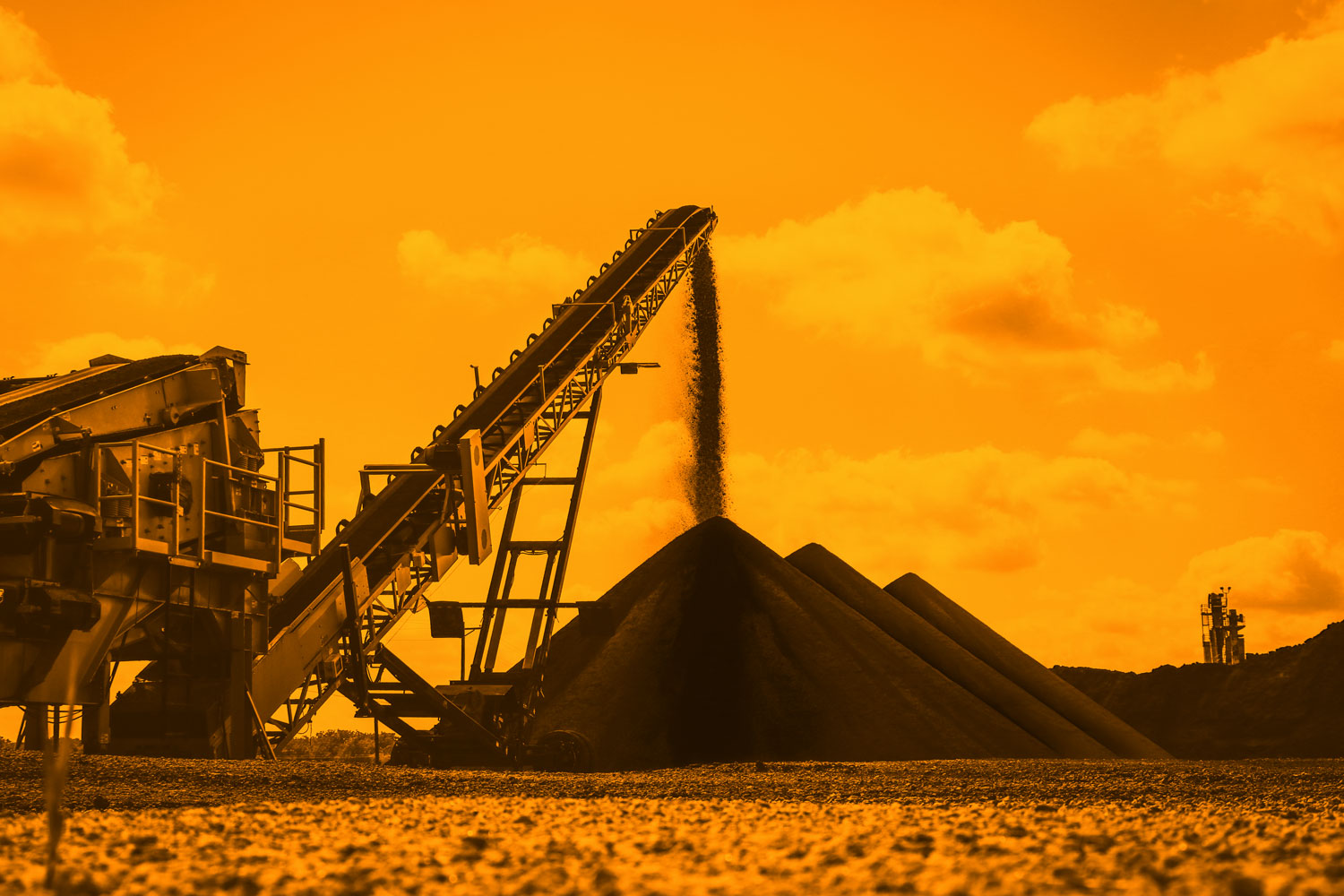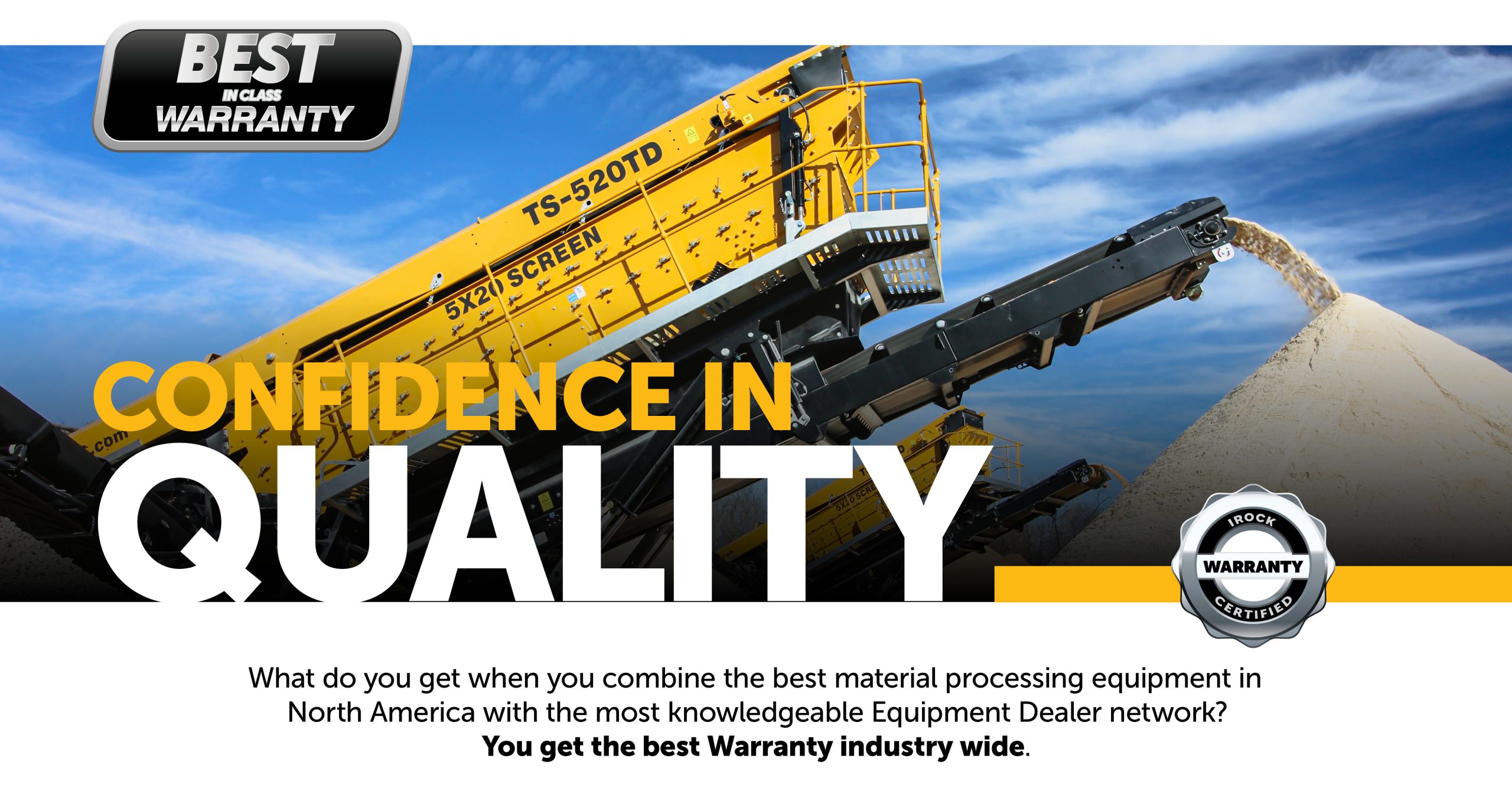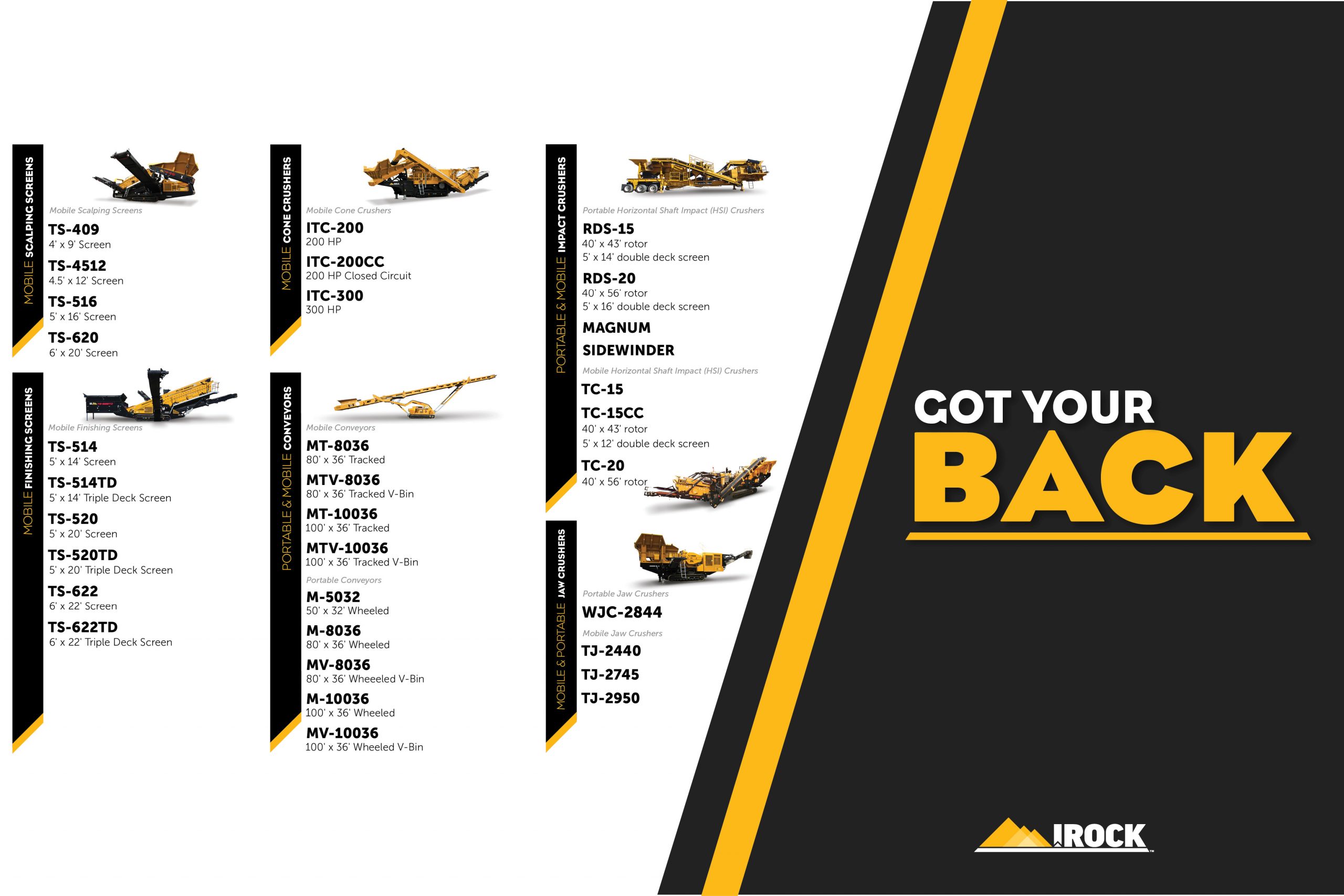How To Select The Right Plant For Your Demanding Environment
Equipment Selection Tips from IROCK’s Director of Product Development & Applications
Purchasing a new crushing plant is a major decision for any company no matter how big or small the company may be. So, how do you ensure that the equipment you purchase is the right equipment to fit your company’s needs? Well, let’s try to break it down into a series of logical steps to follow to help you make the correct decision.
The first thing you need to do is define your requirements. By this, we mean you need to determine what type of material you are going to be crushing, what finished materials you want to produce, and what production rate (tph) is required to achieve your annual goals. If you own and operate a rock quarry in a territory where the rock is soft and non-abrasive, and you sell four main products consistently then determining the type of plant you need is relatively straightforward. However, if you operate a construction company working on multiple projects at any given time across a large geographical area, the decision becomes a little more complicated.
Production Rate:
Let’s say you operate a medium-sized construction company and you have secured three projects for the upcoming year that each require 100,000 tons of base material to fulfill the project requirements. For Projects #1 and #2, you have four months each to produce the material but on Project #3 you only have two months to produce the 100,000 tons of material. What size plant do you purchase? If we focus on the highest demand in the shortest timeframe (Project #3) then you require a plant that can produce approx. 300 tph daily, but is it always that simple? Rarely. Frequently construction companies are faced with the real-life scenario of having to produce these materials in a much tighter timeframe. Project #1 for example could be a road project with limited space that requires 25,000 tons per week in a tight 4-week timeframe in the middle of the project which would require a much higher capacity crushing plant – closer to 600 tph if operating a standard 40-hour week. This type of situation is not isolated to only construction companies. Rock quarries can also be impacted by similar situations if the projects are large enough in scale. Although, they are usually not as restricted by space and larger projects are generally planned well in advance so they can stockpile the required materials.
Material Feed Size:
Overlooking the material feed size is one of the most common and most critical mistakes made when selecting a crushing plant. When it comes to jaw crushers, the general rule of thumb is that the maximum feed size is 85% of the minimum crusher inlet opening. So, for a jaw crusher that has an opening of 45-in. x 32-in. then the maximum feed size would be 85% of 32-in. which is 27-in. Could this machine handle a slightly larger rock? Yes, it could, if the rock falls into the crusher oriented perfectly. However, for this machine to run most efficiently and achieve the best possible production rate, it is much more effective to provide a consistent feed size in the 0–27-in. range. For smaller machines, this feed size would decrease accordingly.
For an impact crusher, the maximum feed size can also be determined by the inlet opening size, if the machine is used in a recycling application where the feed material is not very hard. However, if the machine is to be used in a blasted rock or perhaps a natural gravel application, then the maximum feed size will be determined by the thickness of the blow bars on the rotor. As a general rule of thumb, the maximum blasted rock feed size will be in the 18-in.–22-in. size range, and for natural gravel stone, which tends to be very hard, the maximum feed size will be much smaller – generally in the 10-in.–12in. range.
Material Characteristics:
Another very important aspect to consider, when selecting the right plant, is determining what type of material you are going to be crushing. It is highly recommended to have a material analysis done to help with making your decision. A material analysis can provide important information such as the hardness, abrasion value, bulk density, and flakiness index (just to name a few) all of which help to determine what type of crusher is the appropriate machine to meet your specific needs. For example, if you needed to produce a very high-quality material in terms of product shape, but your material analysis results show that the material is very flaky, then you might consider selecting an impact crusher rather than a cone crusher to help achieve the required finished product shape.
Plant size:
It goes without saying that any crushing plant you select should match up accordingly with the support equipment that will feed the plant. For example, you don’t need a 60-ton crusher if your largest excavator is a 35-ton machine. What are the benefits of smaller machines, and what are the benefits of larger machines? The first benefit of a smaller sized machine is ease of transport. They are easier to move and don’t usually require superload permits or pilot cars when moving between sites. This is important if your needs require a machine that is going to move around from site to site frequently. Smaller machines cost less so your initial capital expenditure is lower which is important if you own a growing company and managing capital expenditures is critical to building a successful business.
On the other hand, there are benefits to selecting a larger plant which need to be considered when making a purchasing decision. A larger plant will, of course, produce a higher volume of material. So, if your material demand is higher, than a larger plant may better suit your needs. Larger plants also tend to be more robust and better suited to handling the larger material feed sizes, which generally lead to less wear and tear on the machine and less downtime. Being able to handle a larger feed size is also an advantage in that it requires less secondary breaking of the feed material which can add significant cost to a project.
Cost per ton:
The unit cost per ton of the material you produce is very important and can have a major impact on the profitability of your company. What are the major factors that have the most impact on the unit cost per ton, and which should you focus on the most? Generally, purchasers immediately think the initial capital cost is a major factor and focus on a low price when purchasing their equipment. But in reality, this tends to have less impact on cost per ton than you might think, even when you vary the capital cost by hundreds of thousands of dollars. The variables that do, however, have an extremely high impact on cost per ton are: 1.) The number of hours that you utilize the plant annually; and 2.) The production rate of the machine. If you utilize a machine for 2,000 hrs. per year, then the cost per ton to produce material can be as much as 40% lower than that of a plant operating for only 1,000 hrs. per year. For this reason, it is important to bid on projects that help to maximize the annual utilization of your equipment and select equipment with proven reliability to minimize downtime. Selecting a larger plant with a higher production rate is often beneficial as it tends to result in lower unit cost per ton. Nonetheless, it can also help get the job completed in less time since having the crushing portion of a project completed sooner helps to free up excavators and loaders for other jobs on the project.
Availability of parts:
No matter what plant you purchase, replacement parts will eventually be needed. So, it is important to partner with a manufacturer who can supply the parts you need to get back up and running right away. You should be aware of where the parts will be coming from and the delivery options to your location. It is wise to engage other customers using the same equipment to get feedback on their experiences with that manufacturer, and ultimately choose a plant where the manufacturer of that plant truly cares about your business and helping you succeed.
Overall selecting the right plant to fit your company’s needs can be a difficult process, but with proper research and identifying some key aspects of the type of work you need to complete, the decision-making process becomes a much easier task. The considerations mentioned above don’t cover everything that you need to consider during the selection process, but they will certainly put you on the path to selecting the right plant for your needs.
Paul McCaffrey
Director of Product Development & Applications
At IROCK Crushers, we are committed to helping our customers get the most out of their equipment. Put simply, people gravitate towards and find success working with people who are trustworthy, present mutually beneficial opportunities and have a high degree of integrity. Our Values exhibit just that, and we find it extremely rewarding to foster both new and existing partnerships that share similar qualities and aspirations. To learn more about IROCK and how our Core Values guide our decisions Click Here.
If you have any questions regarding which type of plant is best suited to your needs, our applications team is here with the experienced staff and knowledge to help you make the right choice.




